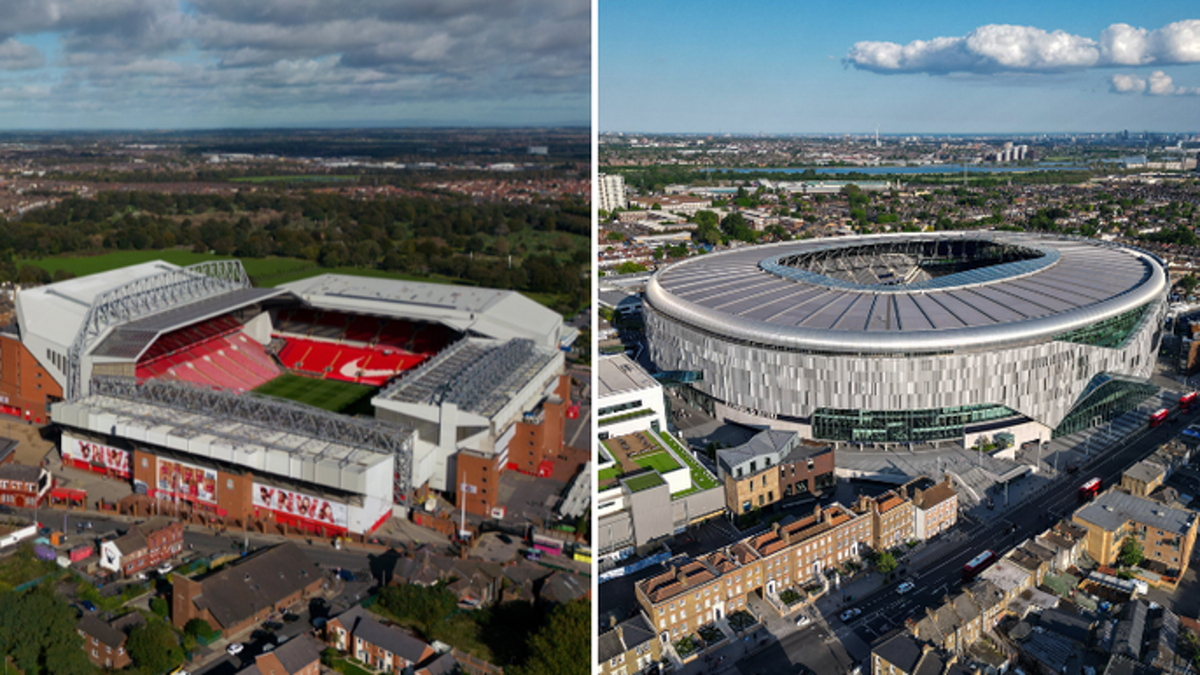Infra
General Election – Rebuilding Britain’s Infrastructure: Where to start and how to pay for it? – IFA Magazine

– Investment trust managers’ top priorities are housing, transport and decarbonisation – “Investment trusts should play a fundamental role”
It is widely accepted that Britain’s infrastructure network is in urgent need of reform. In its election manifesto, the Labour Party detailed numerous ambitions, ranging from making the UK a clean energy superpower and creating a long-term strategy for transport, to creating a ten-year infrastructure strategy. Labour also reaffirmed its commitment to a new National Infrastructure and Service Transformation Authority.
With so many areas requiring substantial investment, where should the next government start? We asked managers of investment trusts in the Infrastructure sector what they thought the next government’s priorities should be, how they should be financed, and what part investment trusts could play in the process.
Urgent infrastructure priorities
Phil Kent, Investment Adviser to GCP Infrastructure Investments, said: “Quite simply, the new government needs to get Britain building. Infrastructure is required across the provision of low cost and affordable housing, and the associated social infrastructure – education, healthcare, leisure – needed for a growing and ageing population. Support to the digital economy should be enabled through the rollout of 5G and high-speed broadband connections across the UK.
“Decarbonisation, including the electricity grid but also addressing greenhouse gas emissions from heating, transport, agriculture and industry, will also require significant new infrastructure. But before turning attention to the building, or even the funding of this infrastructure, reform is needed to the planning system and the approval processes more widely to ensure developments can be delivered in a timely and efficient manner.”
Ed Hunt, Fund Manager of HICL Infrastructure, said: “In October 2023, the National Infrastructure Commission published their second national infrastructure assessment, outlining a 30-year plan for a low carbon and resilient economy that supports economic growth and protects the natural environment. This will require a significant increase in government spending across two broad areas.
“First, the support of a transition to a decarbonised economy with improved regional connectivity both physically and digitally. This will require new investment and projects to support the electrification of most sectors, carbon capture and storage to support a decarbonised economy, and enhanced transport links particularly across England’s regional cities.
“Second, an increase in infrastructure spending to support the maintenance and renewal of critical social infrastructure such as schools, hospitals and prisons. As new technologies emerge, existing assets decay and the needs of societies shift over time, upgrading and building new social infrastructure is critical to people’s quality of life.”
How could/should new infrastructure be financed?
Chris Morgan, Senior Investment Director at Amber Infrastructure, investment adviser to International Public Partnerships, said: “The demand for improved transportation, reliable energy sources and sustainable solutions is on the rise. However the cost of delivering this infrastructure is considerable. Governments have pressing infrastructure requirements but continue to be fiscally constrained in the current climate, and as such there is a greater role that the private sector can play to assist in the development and funding of infrastructure requirements.
“Models such as single asset regulated investments allow for collaborative ventures between the government and private entities, and blend the efficiency and innovation of the private sector with the public interest focus of the government. Continuing closer collaboration between infrastructure investors and government can help ease governments’ funding constraints, create jobs, boost economic recovery and help the country reach its net zero targets.”
Ed Hunt, Fund Manager at HICL Infrastructure, said: “Government needs to attract private investment into infrastructure in order to achieve the levels of spending needed to both maintain the service levels from existing social infrastructure and to transition to a modern low carbon economy. However, creating a structure for infrastructure investment that both attracts meaningful private sector involvement, at an appropriate cost, whilst also delivering good value to the public is a challenge that all UK political parties have been grappling with since 2018.
“Future procurement should build on the many successes of the Private Finance Initiative (PFI) whilst seeking to improve on some of its perceived shortcomings. We have seen a reasonable attempt at this with the Mutual Investment Model (MIM) used in Wales, for example. Like a public-private partnership, MIM sees private partners build and maintain public assets, harnessing private sector innovation, whole-life costing and standardised performance-based contracts, but also introduces minority equity participation for the public sector, the sharing of excess returns and the delivery of wider community benefits. Whilst not perfect, building effectively on an established procurement model creates greater predictability, reduces cost and generally improves ‘investability’.
“Privately financed infrastructure works best where there is a spirit of partnership between the public and private sector stakeholders, while holding the private sector to account. Future governments must recognise that in order to attract new capital to UK infrastructure, it needs to treat ‘old capital’ fairly, and make a success of the many privately financed infrastructure assets already in the UK, delivered through existing PFI/PPP or regulated models.”
Phil Kent, Investment Adviser to GCP Infrastructure Investments, said: “Financing should be appropriate for the project. Where established projects are being deployed, the private sector can, with the right incentives and regulatory frameworks, fund projects efficiently. The capital-intensive investment requirement and associated long-term income generation from infrastructure projects is attractive to many domestic and foreign investors with capital available to invest. Models such as the contract for difference and regulated asset base have worked well to promote new infrastructure development.
“The government also has a role to play. It should be supporting research and development to commercialise new technologies. It should also support through the provision of capital or revenue support (or other forms of guarantee), for projects that may struggle to raise private sector finance, such as deployment of rural broadband, or projects that are very large such as nuclear.”
The role of investment trusts
Chris Morgan, Senior Investment Director at Amber Infrastructure, investment adviser to International Public Partnerships, said: “Investment trusts allow for stability and predictability for both service providers and investors, while also creating a reliable avenue for long-term investments. By boosting investors’ ability to access a broad spectrum of assets and sectors via a defensive, income-generating model, investment trusts also aim to help grow investors’ awareness of the role infrastructure plays in essential public services and hence extend the amount of capital that can support core infrastructure.
“The government’s commitment to net zero will require extensive investment in infrastructure and changes across industries. The changes required to transition to a low-carbon economy have the potential to be wide-ranging, including adapting to decarbonisation of heat, increased electrification of transportation and other systems previously dependent on fossil fuels, and decarbonisation of construction. As infrastructure continues to perform a key role in the transition to a low-carbon economy, investment trusts will play an important part in helping to finance the unprecedented amount of capital that a timely transition will likely cost.”
Phil Kent, Investment Adviser to GCP Infrastructure Investments, said: “Investment trusts should play a fundamental role: they are a well-established structure that provide investors of all types – from institutional to retail – with liquidity in the secondary markets, whilst the investor’s risk and return can be exposed to illiquid underlying infrastructure assets.
“I don’t think success needs to reinvent the wheel. Success could simply be taking structures that have worked and making sure they are delivered efficiently – and that the barriers to doing so are removed.”
Ed Hunt, Fund Manager at HICL Infrastructure, said: “Investment trusts can play a key role in the financing and development of new infrastructure, as their success is naturally aligned with delivering positive outcomes for society. Investment trusts have long-term investment goals and targets with time horizons in line with the infrastructure projects they invest in, which far outstrip the understandably shorter-term governmental mindset. The success of an infrastructure investment trust is inextricably linked with the successful delivery of projects and positive outcomes for the communities that the assets serve. This alignment of interests and ringfencing of capital for the entire duration of a project ensures the delivery of critical infrastructure and services to a high standard regardless of economic or political cycles.”










